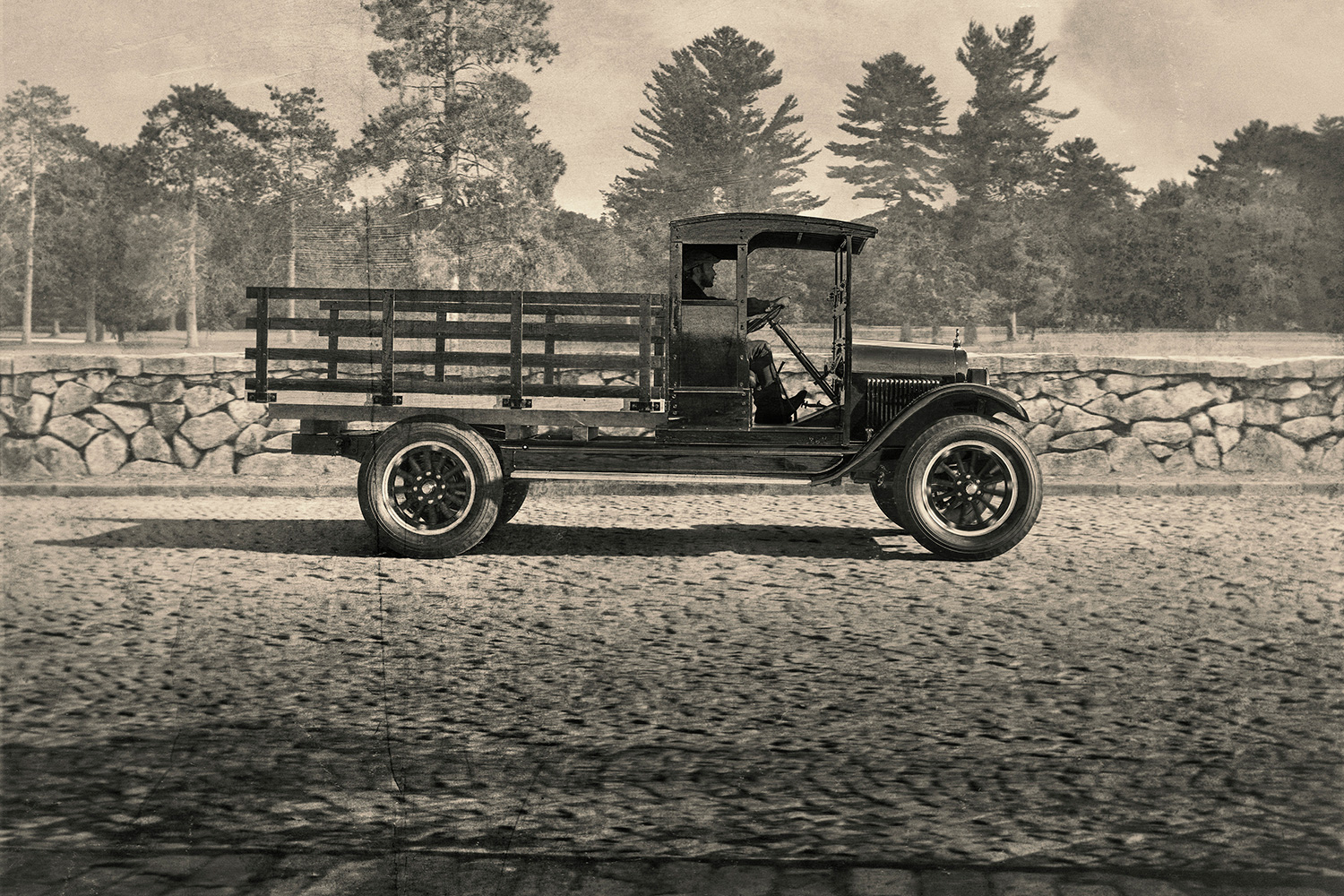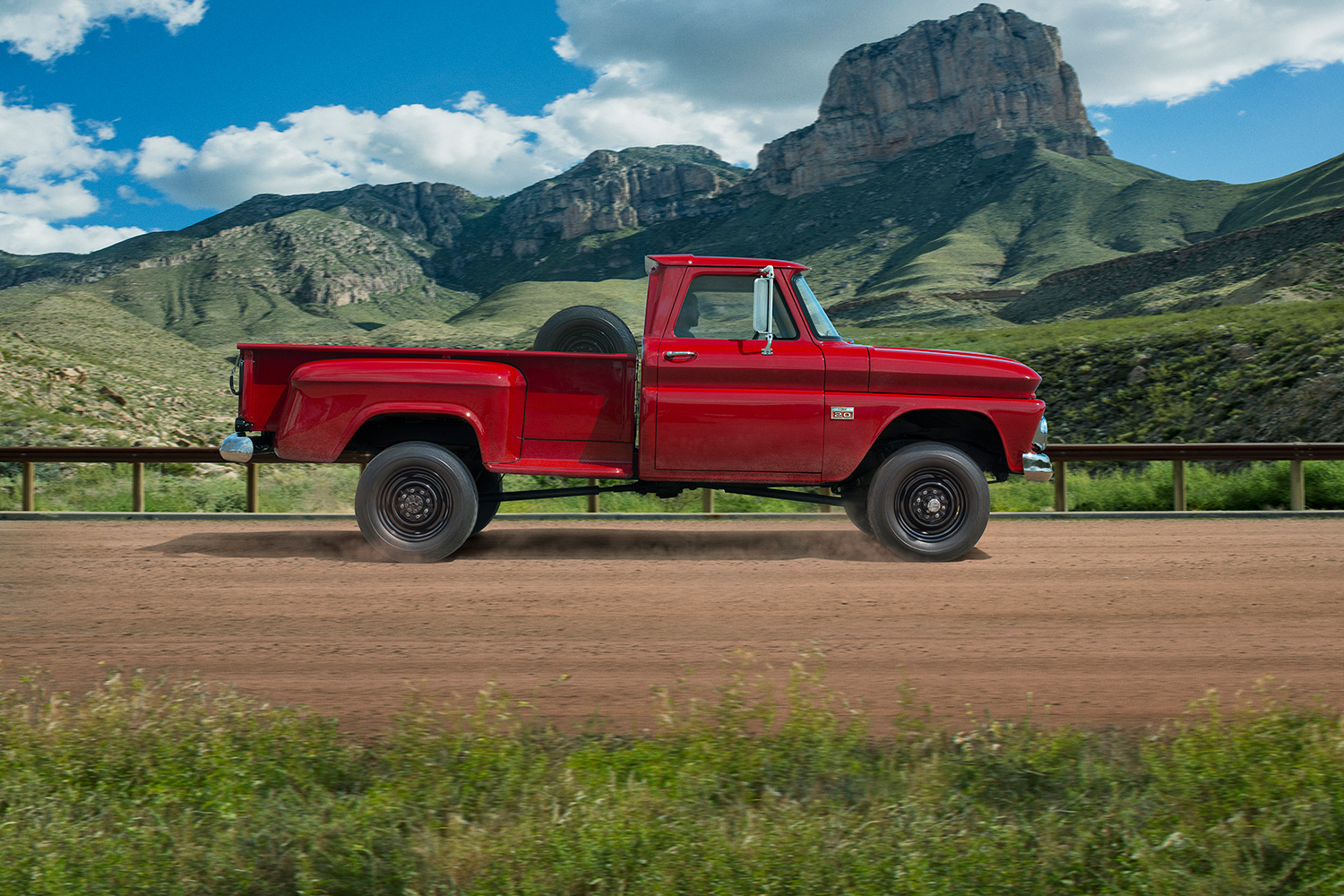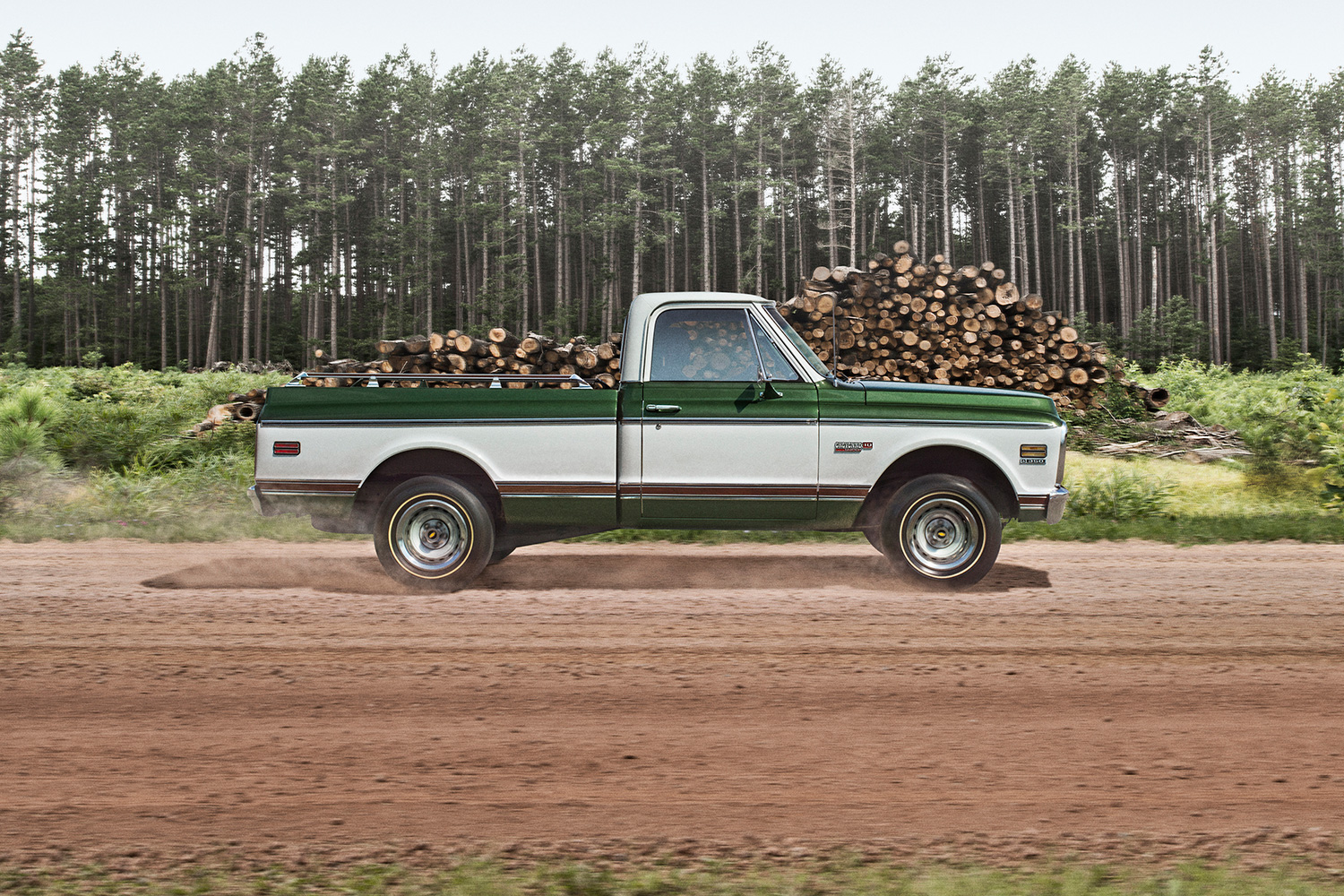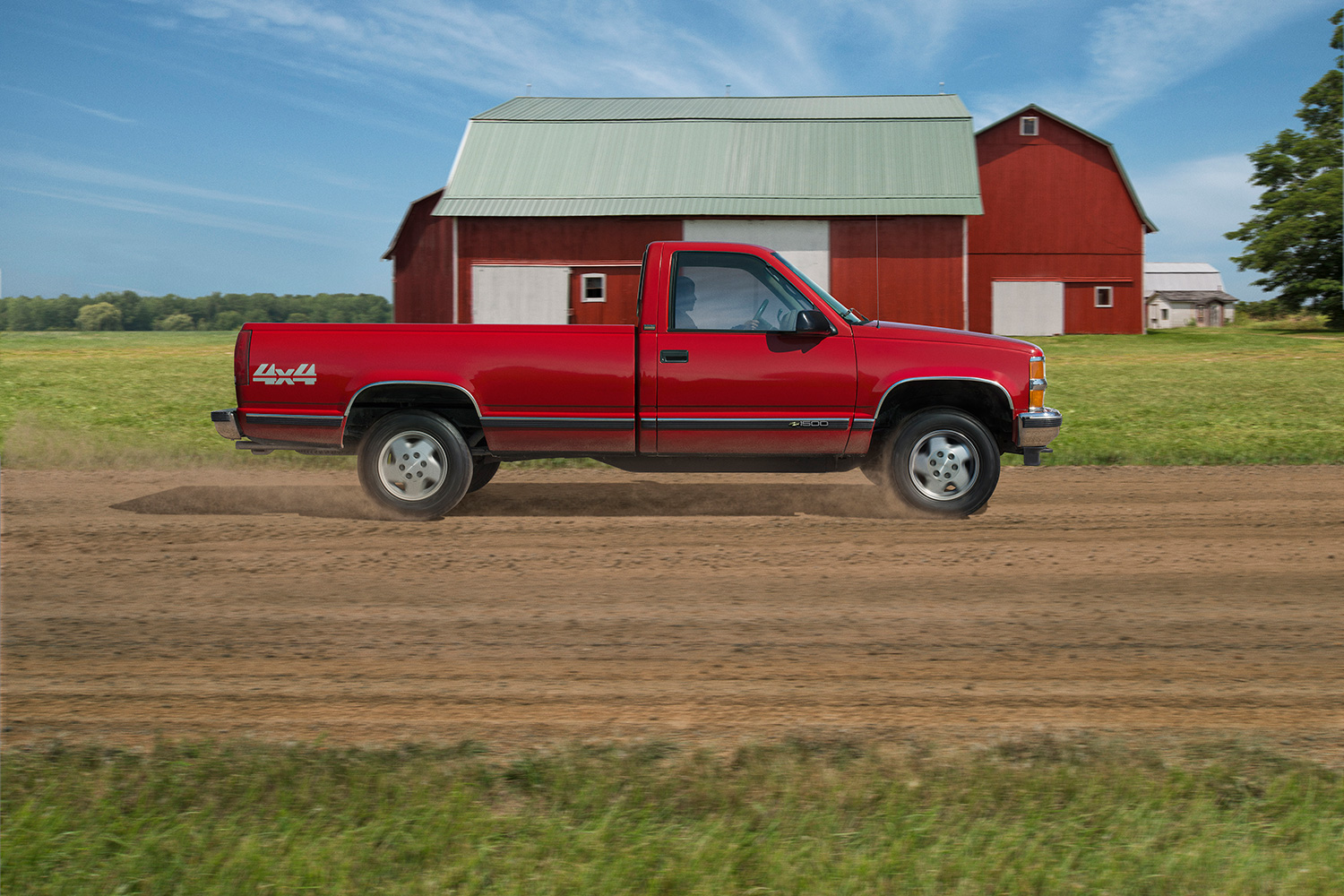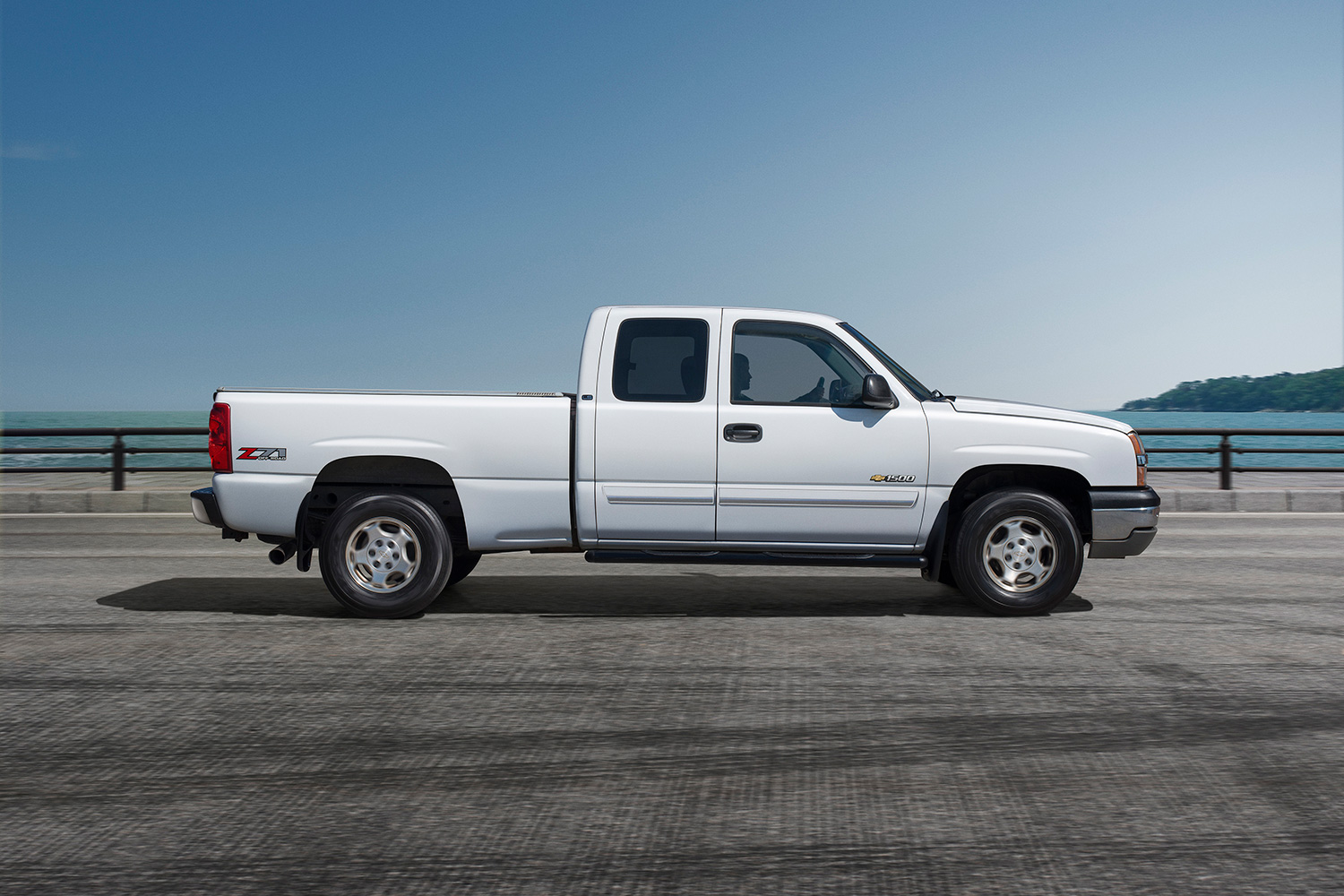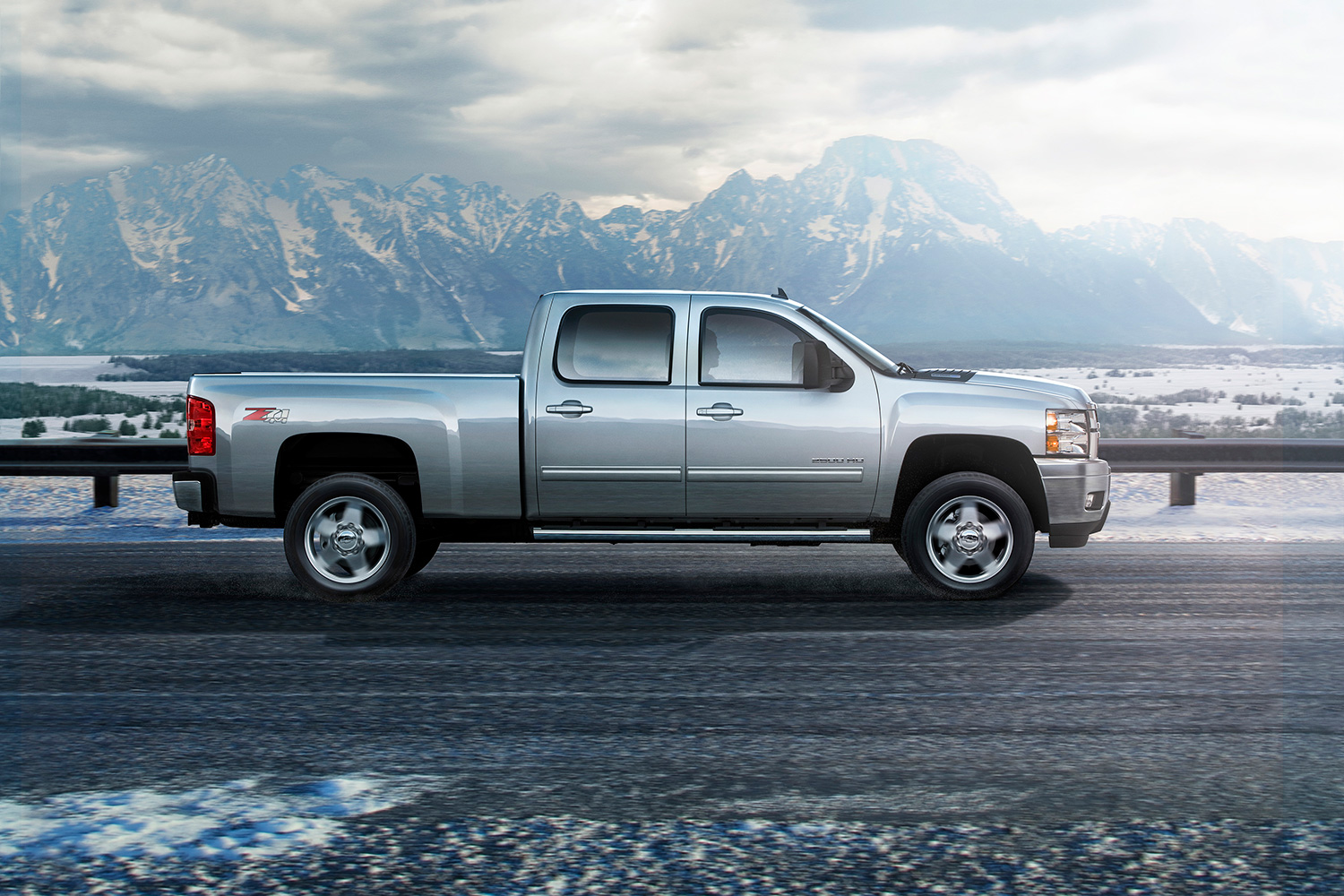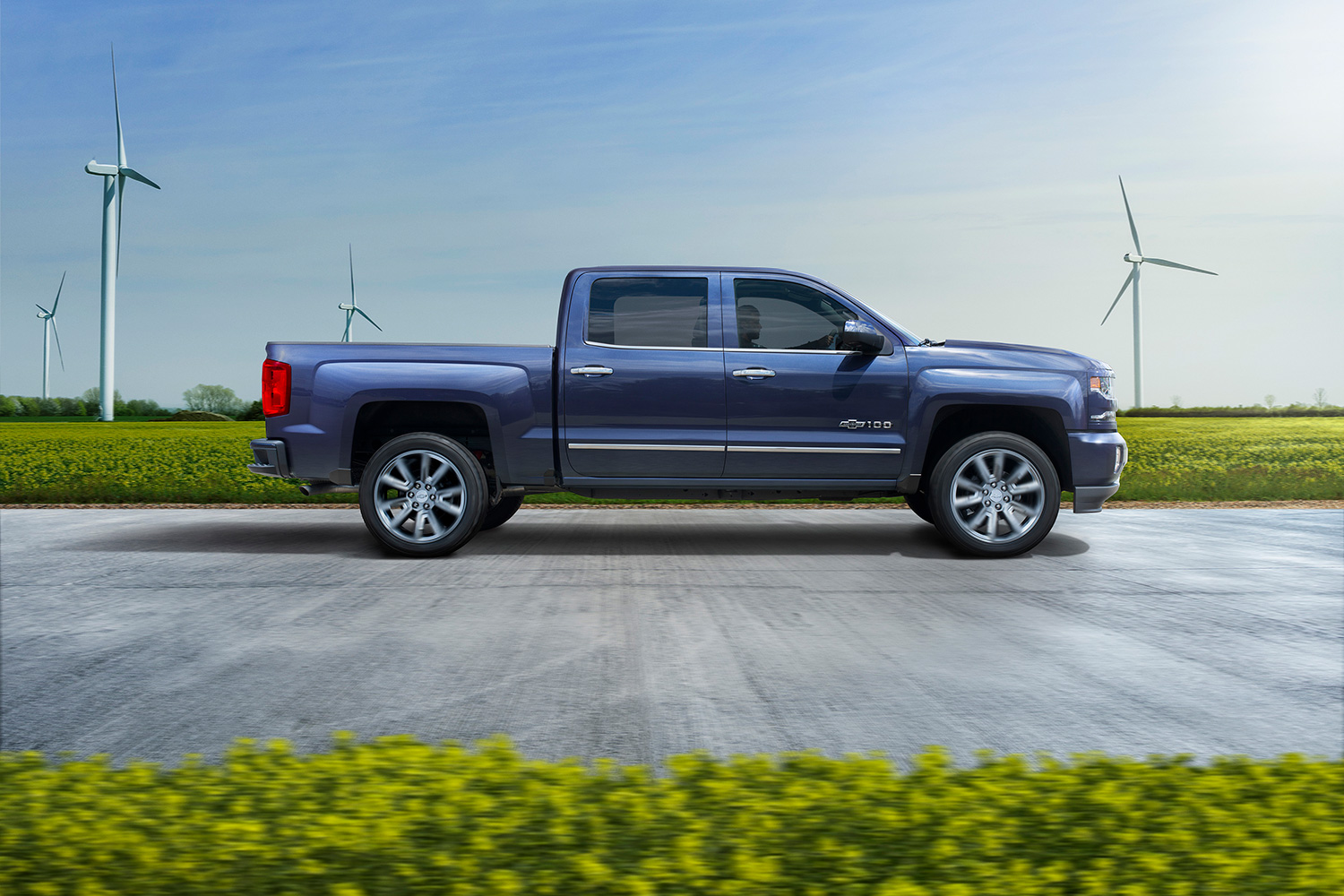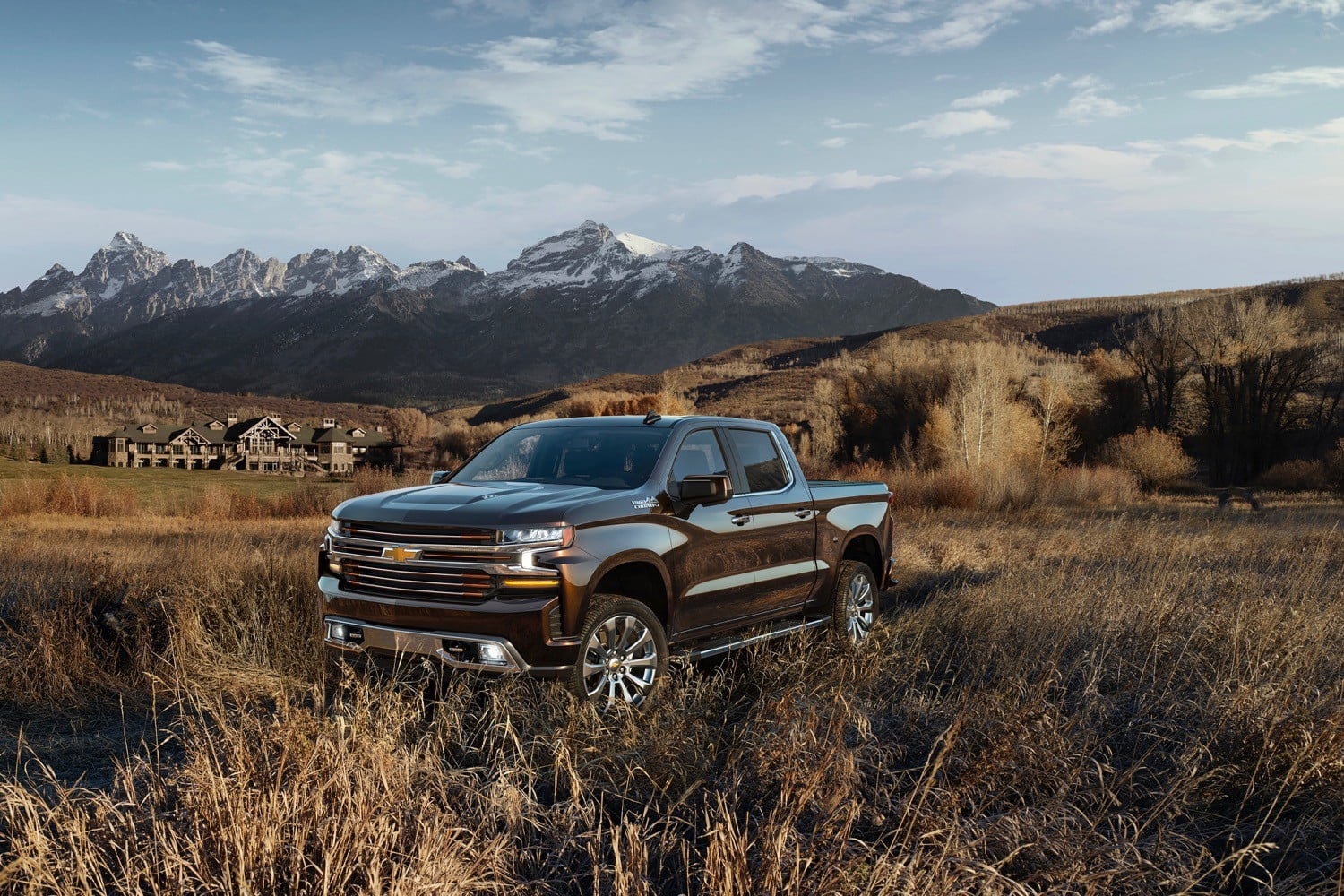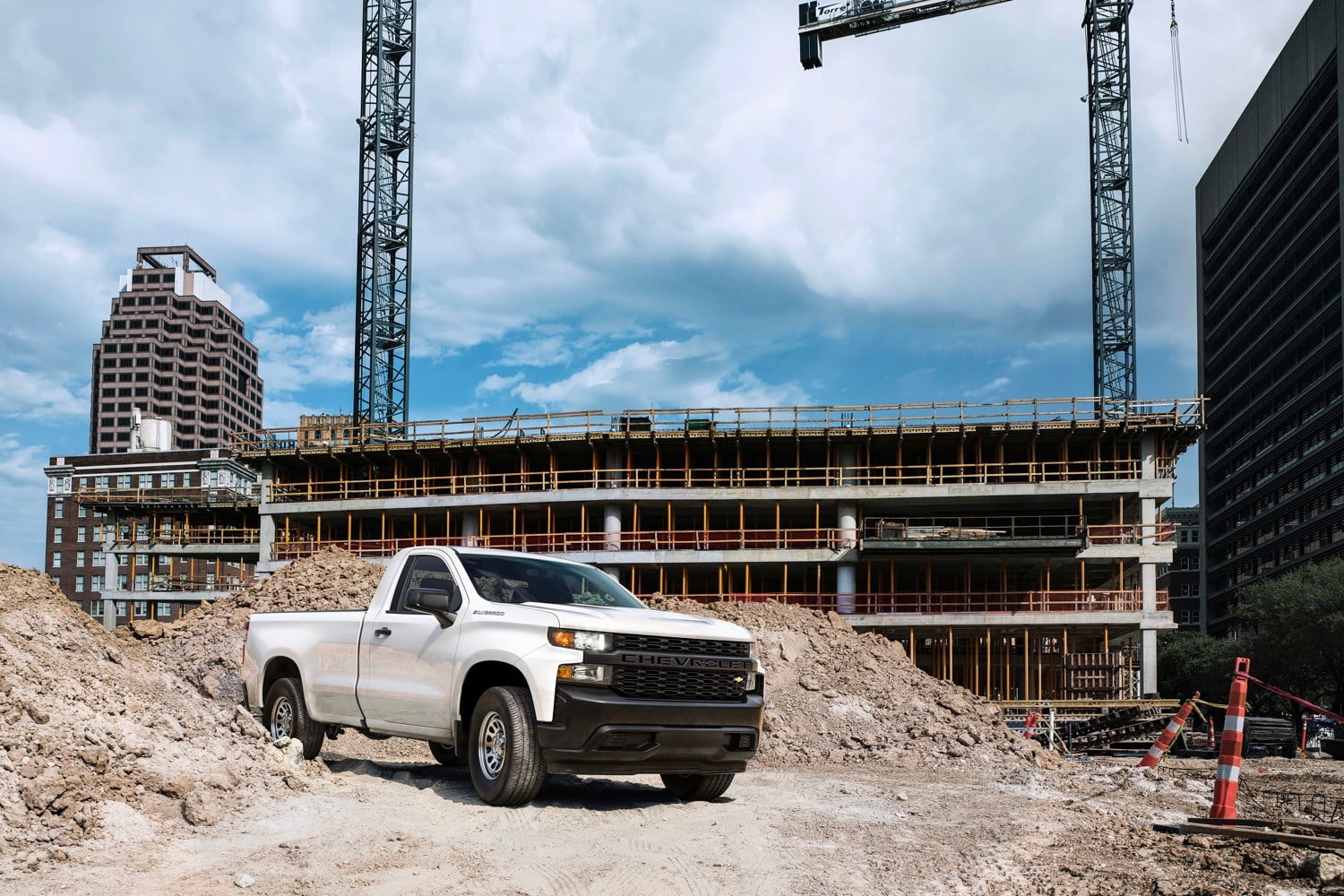
If you’re considering adding a classic to your garage, there are many good reasons to think about a vintage truck. First, they were made in massive numbers, and until the modern era the difference between a basic work truck and a top-of-the-line usually amounted to an engine upgrade and maybe a heater in the dash. Taken all together, that means a pickup truck is easy to find, and easy to restore to factory condition or better.
Obviously, the basic rules of cars apply to trucks as well. The older it is, the more it’ll cost you to buy and restore, and the less like a modern car it will be when you’re done. Even if you choose the resto-mod route, there’s only so much you can do to bring an old truck up to modern performance.
So, with that in mind, here’s a quick primer on Chevrolet trucks from the beginning through the 2018 launch of the next-generation 2019 Chevrolet Silverado. If you think and old truck is in your future, this should help you narrow down your choices.
1918 – 1939: Superior Trucks
Chevy sold its first truck in 1918. It was adapted from a flatbed mule that workers used in the factory to haul parts around. The first Chevy trucks were super primitive – just a frame and a basic seat. Buyers had to build the cab and bed they wanted, so anything you find from the 1920s is going to be custom-built and generally it’s either already been restored or it’s a pile of rusty parts. The Chevy engine back then was a basic 2.8-liter 4-cylinder good for 30 horsepower or less. The transmission was a three-speed manual on the floor with a clutch, but no synchros, which help make gear changes much smoother.
The 1920s were a period of great innovation, and Chevrolet introduced the overhead valve inline six-cylinder engine in 1929. That engine was developed and remained in active production until 2001. The 1929 straight six engine displaced 3.2 liters and made 46 horsepower. Chevrolet received a patent for the basic overhead valve design, as opposed to the flatheads that had been made earlier.
1932 was another big year, because Chevrolet was first to market with a new transmission offering three synchronized gears, which greatly simplified the shifting and driving process. Synchros work by gently encouraging the gears in the transmission to spin at the same speed as the engine when you shift, so you can just press the clutch and move the gear selector.
The takeaway here is that if you want a really old truck, which is anything made before World War 2, you’re better off with something from 1932 or later if you actually want to drive it. You can trust it will still be primitive enough to be really scary and uncomfortable on the road. Plus, if you’re taller or bigger, the cabs are really small. It’s pretty tight to try and fit two full-grown adults in the cab of a pre-war truck.
1947-1954: Advance Design Trucks

There really aren’t any civilian trucks made between 1941 and 1945. In those years, Chevy was busy building about 450,000 military vehicles and 61,000 aircraft engines to win the war. In 1945 and 1946, when the firm got back to building trucks, it simply built more of the last 1941 models while retooling. But when the new trucks came out, they were breathtakingly good-looking and technically advanced. Chevrolet had begun the Advance Design work back in 1942, so the company was ready to move forward when all the returning soldiers went to buy trucks.
Advance Design trucks had larger cabs than previous models, with 12 inches of additional foot room and eight-inch wider seats with reclining backs. They also had larger windows all around. Moving the shift lever from the floor to the steering column in 1948 made it easier to seat three across in a Chevy, and a four-speed synchronized transmission was introduced in the same year.
Under the skin, the Advance Design trucks used a new and more robust frame so they could carry more cargo. Chevy also offered rubber bushings between the frame and the cab for a more comfortable ride. Telescoping tube shock absorbers were introduced in 1950, replacing the old lever-arm design.
The venerable Chevy Six was still the engine you got with a truck. The Chevy Six produced 90 horsepower for 1947, with a nominal bump to 92 in 1949. But the most momentous technical development of the Advance Design era came in 1954 with the availability of the Hydra-Matic automatic transmission. Once introduced, the automatic transmission was a game changer, allowing far more people to drive Chevrolet pickup trucks than ever before. However, the take rate on the automatic was still pretty low so finding one today could be tough.
Chevrolet’s Advance Design became the best-selling truck in America from 1947 to 1955. If you’re looking for the oldest Chevy truck that will be fun to drive on a modern road, this is it.
1955 – 1959: Task Force

In mid-1955, Chevrolet revealed a sweeping redesign of its truck line, releasing the new “Task Force” models that included the brand-new small block V8 engine. For sheer design beauty, the 1955-1959 Chevy trucks are the best ever made. The fenders give you that lush and lovely 50s look, and the cabs are mostly glass with wraparound front and rear windows. It’s everything you want in a classic.
Chevrolet was first to market with a wrap-around windshield on the 1955 models. The same year was the first for power steering and power brakes, and for a 12-volt electrical system. The small block V8 engine displaced 265 cubic inches and offered 162 horsepower with a two-barrel carburetor, but that could be upgraded to 180 horsepower with a four-barrel carb. The small block was soon enlarged to 283 cubic inches in 1957, with ratings starting at 185 horsepower. 1957 was also the first year for available factory four-wheel-drive.
The Cameo Carrier models are already collectible and expensive. These were revolutionary and sophisticated pickups that featured a smooth bed with fiberglass fenders, a styling cue called fleetside seen on virtually every truck sold new today. Bumpers were smoothed-in and the entire presentation was more car-like than truck-ish. Today, Cameo Carriers in good shape sell for about $60,000.
If you want a Task Force-era truck, aim for a 1957-59 model with a V8 and an automatic transmission. You’ll get all the looks, plus power.
1960 – 1973: Technically modern trucks
Chevrolet pickup trucks got a major redesign for 1960. The cabs grew again, now 5.8 inches wider than the Task Force era, and Chevy added more legroom and headroom. But the biggest technical improvement was the adoption of independent dual A-arm front suspension with torsion bars instead of leaf springs. In 1963, the torsion bars were replaced with front coil springs. This finally gave Chevy pickup trucks something like modern steering, because the old solid front axle bounced both sides on every bump.
In the rear, the traditional leaf springs on 1/2-ton and 3/4-ton Chevy trucks were replaced with coil springs and trailing arms. Together with the front suspension redesign, this gave Chevy light trucks of the 1960s the best ride and handling of any truck up to that point. However, keep in mind the one-ton and four-wheel drive trucks still came with leaf springs on all four corners.
The 1960-1967 trucks have a distinctive look with a lot of sculpture to their hoods and fenders, but in 1968 Chevy introduced a smooth new design. The underpinnings remained the same, and you might want to consider the end of this era for an early-modern collectible truck. That’s because in 1971, Chevy trucks got one of the most important safety upgrades in their history with the advent of front disc brakes. If you’ve never driven a car or truck with four-wheel drum brakes, you don’t want to start now.
1973 – 2018 – The Rounded Line and Silverado Era
In late 1972, Chevrolet released another truck redesign, called the Rounded Line. This was such a small adaptation of the 1968 redesign that you might not even notice the differences, but it was one of the most popular designs ever, holding out until the 1987 model year. The trucks made in this 15-year span are just now being recognized as collectibles, so there are plenty around and they’re cheap to buy.
At the end of the Rounded Line era in 1987, trucks had fuel injection, cleaned up emissions, and improved safety. At this point, Chevy trucks could be considered truly modern. And you could still buy a 1987 model with a Chevy Straight Six engine directly descended from that first engine in 1929, or a small block V8 very similar to the 1955 model.
By 1978, Chevy was using the term Silverado for a top trim level truck, and later the name expanded to include all Chevy full-size trucks. Tech, engines, and handling have continued to be improved and refined to the point where it’s perfectly reasonable to use a pickup truck as your daily driver.
The 2019 Silverado and the next 100 years
Chevrolet unveiled the 2019 Silverado last month at the Detroit Auto Show, and gave us a look at the specs. Compared to the outgoing model, the new truck boasts a wheelbase that’s 3.9 inches longer and stretches an additional 1.6 inches from bumper to bumper, which increases bed capacity and cabin space. It also weighs about 450 pounds less than the old one thanks to extensive use of aluminum in the doors, hood, and tailgate. The bed itself is still made of steel for durability.
The 2019 Silverado will be configurable with a variety of engine/transmission combinations, including new 5.3-liter and 6.2-liter V8 engines. The Silverado will also be available with a 3.0-liter Duramax inline-six turbo-diesel. Both the diesel and 6.2-liter V8 engines are paired with Chevy’s new Hydra-Matic 10-speed automatic transmission.
It’s safe to say the new Silverado carries forward all the technical advancements made over the last 100 years. Give it 50 years or so and these trucks will be just as collectible as a Task Force or Advance Design. If you’re looking for a vintage truck to collect and something to drive every day, maybe the best solution is to get one of each?
Editors' Recommendations
- Audi ActiveSphere concept is part luxury sedan, part pickup truck
- GMC poured all of its truck-making expertise into the Sierra EV pickup
- President Biden drives Ford F-150 Lightning electric-truck prototype
- Rivian R1T electric pickup to roll out June 2021 as Illinois factory sets up
- Chevrolet developing full-size electric pickup truck with 400-mile range

